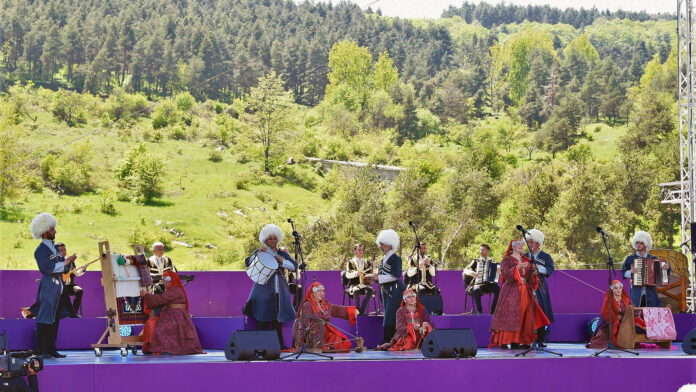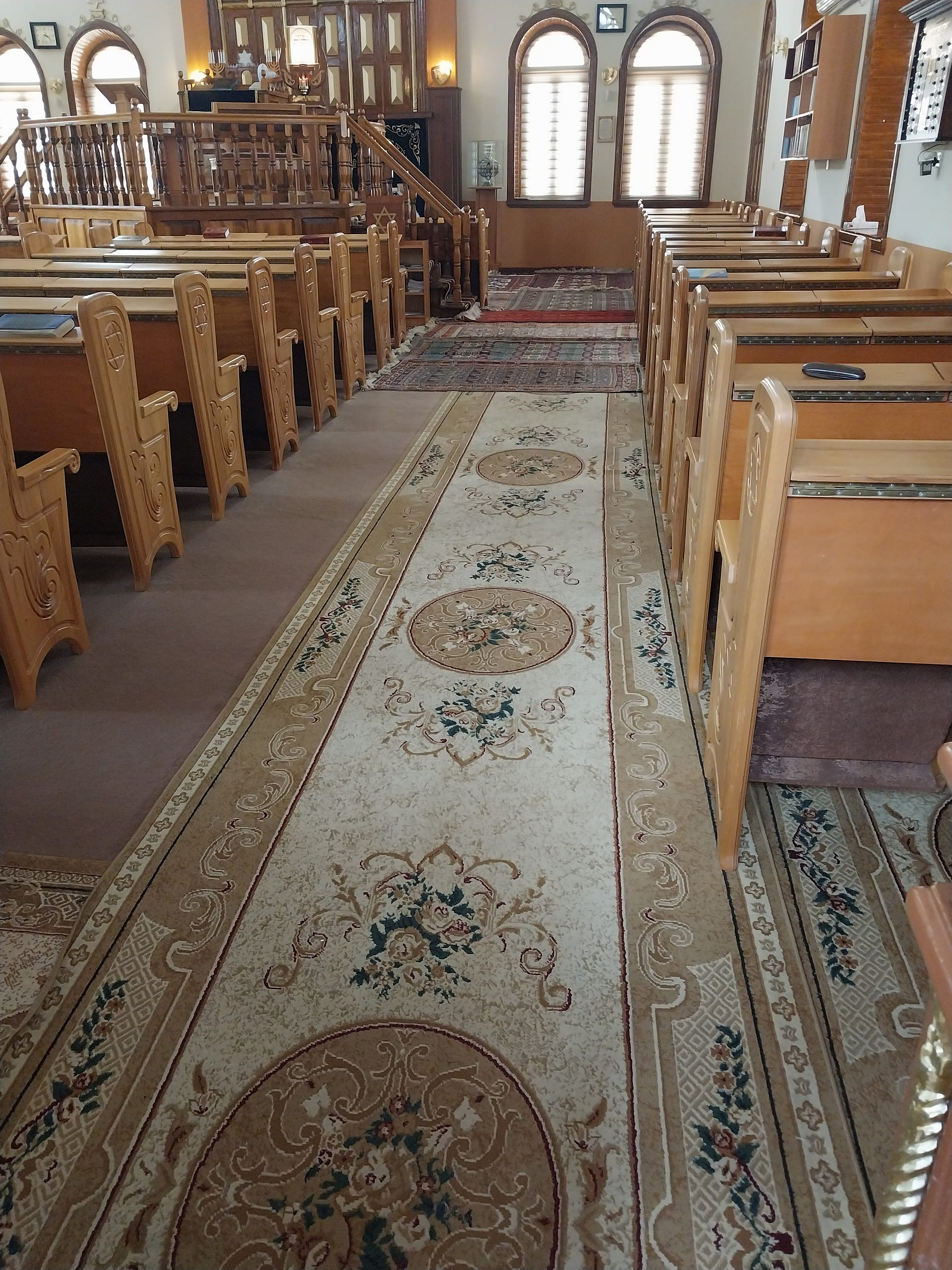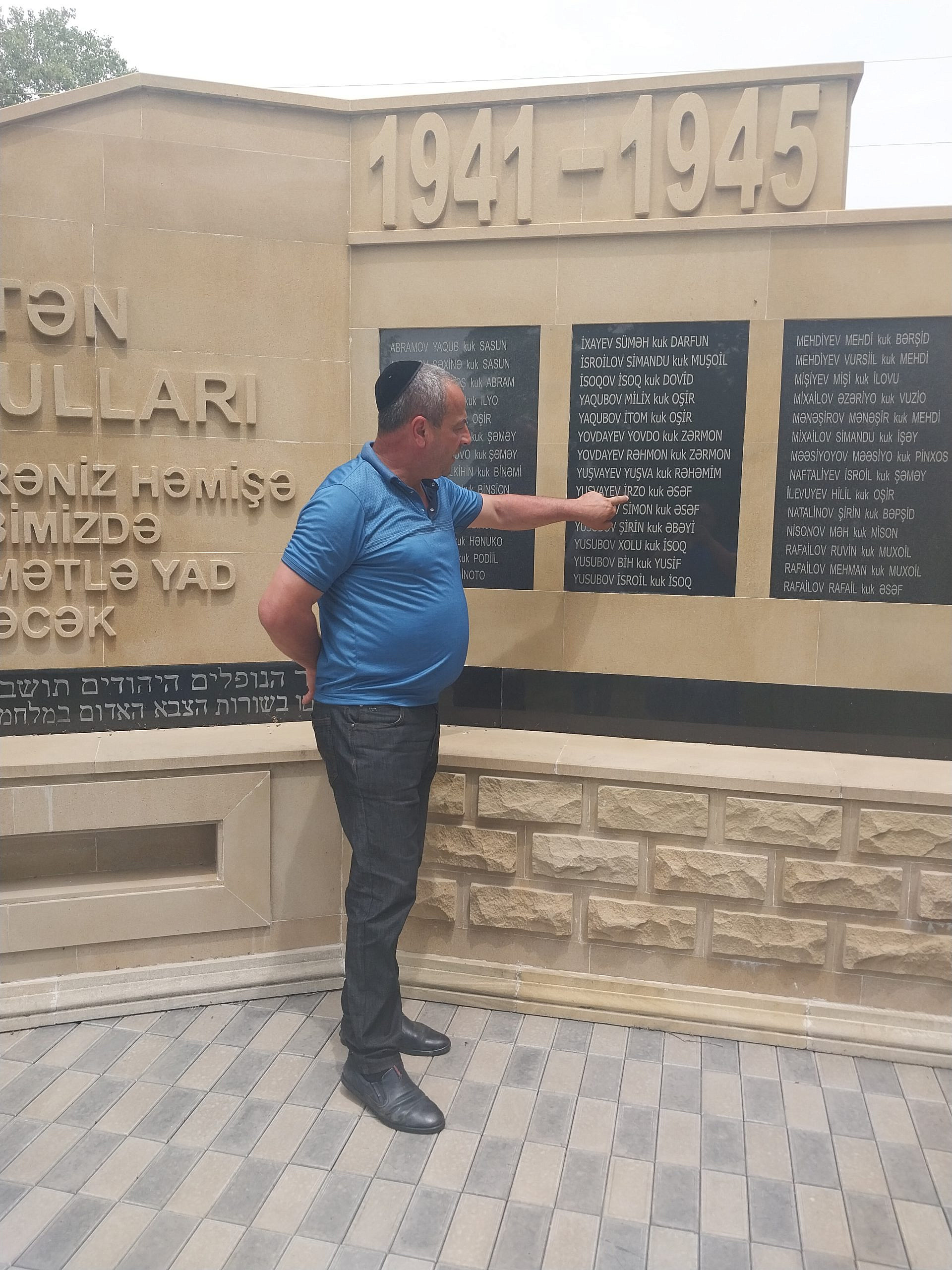
AZERBAIJAN (JNS) – The Jewish community in Azerbaijan dates back to antiquity. Every group in Azerbaijan has its own synagogue, Rabbi Zamir Isayev, the chairman of the Georgian-Jewish community of Azerbaijan, told JNS in an exclusive interview last week.
Join our WhatsApp groupSubscribe to our Daily Roundup Email
“They are living in prosperity. There are ancient synagogues, an ancient culture and ancient traditions of communities. During all of these years, the Jewish community has been growing,” the rabbi continued.
Isayev said that most of the Georgian Jews in Azerbaijan are descended from Jews who were expelled from Spain, while the Mountain Jews are indigenous to the region and the Ashkenazi Jews immigrated from Europe about a hundred years ago.
“Georgian Jews moved to Azerbaijan over 100 years ago at the same time as the Ashkenazi Jews. Not all Georgian Jews are Sephardim from Spain, but the part that moved to Azerbaijan are descendants of Jews who were expelled from Spain and Portugal. In the ancient documents in the Georgian Jewish community, it is mentioned.
Isayev emphasized that the Mountain Jews are Persians and Mizrahim.
“You can also call them Sephardic but it is not correct. Most of the Georgian Jewish community is mixed with the Mountain Jewish community. It is the same tradition, so it [marriage between members of the groups] is common.
“For example, my mother is a Georgian Jew and my father is a Mountain Jew. All of the liturgy, tradition and style of prayer and everything is the same as the Mountain Jews. But, we succeed to save our heritage, even though no one from our community today speaks Ladino, but rather Georgian,” he said.
“In Turkey, Sephardim kept their Sephardic names and language, but not in Georgia. They changed their names. So inside of the Georgian Jews, there is a small group of Sephardim. There is also a group that is indigenous to Georgia, but the Azerbaijani Georgian Jews are from the small group of Spaniards,” Isayev said.

Mountain Jews
Elnara Gadashova, a guide at the Museum of Mountain Jewish in Quba, said that Jews have been living in Azerbaijan since the time of the Babylonian exile, and the section of Quba known as the Red Village had at its heights 13 synagogues, one of which presently houses the museum.
“The Jews came to the region via Iraq and Iran. The language of the Mountain Jews is Juhari [aka Judeo-Tat], a language similar to Persian. Originally, Juhari used the Hebrew alphabet, but today it uses the Latin alphabet,” Gadashova said.
Inside the museum, one can get a glimpse of Azerbaijani Jewish life, from Shabbat and holidays to the work performed by Mountain Jews. According to Gadashova, Mountain Jewish women did not just care for their families: “They also created beautiful carpets.” One of them is over 100 years old and is on display in the museum in Quba.
Under the Quba Khanate in the 18th century, Jews and Muslims lived peacefully beside each other until the armies of Nader Shah, the founder of the Afsharid dynasty of Iran, invaded, she said. Historians have described him as the “Napoleon of Persia.”
“He took up his knife and tried to kill Rabbi Rubin Ben Samuel in the synagogue. He ended up ripping the Torah book.”
However, the Jewish community was spared. A copy of the rabbi’s book is displayed in the Mountain Jewish Museum; the original is expected to arrive soon.
More recently, around 3,000 Mountain Jews were murdered alongside more than 50,000 Azerbaijani Muslims during a five-month period in 1918, as Armenians tried to take advantage of the dissolution of the Russian and Ottoman Empires to pursue the dream of a Greater Armenia during the Armenian-Azerbaijani war (1918–1920).
For some, the 1918 Azerbaijani Genocide Museum in Quba may bear an uncanny resemblance to Yad Vashem, but employees of the museum say the architecture was actually based on the Turkic tradition. The museum was built in an area where mass graves were uncovered.
Gadashova stressed that the Mountain Jews also experienced repression under the Soviets.
“Under Communism, they wanted to destroy the Six Dome Synagogue. People then said, ‘Why destroy it when you can use it as a storage facility?’ So, under the Soviets, they used the synagogue as a storage facility. Under Communism, neither Jews nor Muslims were permitted to keep their faith. However, the Jews at that time continued to keep their faith, but in secret,” she said.
Communists enslaved Mountain Jew women, Gadashova said.
“For Stalin’s birthday, Mountain Jews were forced to contribute to weaving a gigantic carpet with a picture of Joseph Stalin. There were 10 women weaving it around the clock, who together finished it within eight months. Today, the carpet is in the storage facility of the Baku Carpet Museum. It is not on display.”
However, she said that since that period, Jewish life in Azerbaijan has been blossoming. “Azerbaijan’s President Ilham Aliyev ordered the construction of the Mountain Jewish Synagogue in Baku. The Six Dome Synagogue is once again operating as a synagogue.”
Gadashova noted that the Azerbaijani government has been doing everything to rebuild Jewish life in Azerbaijan since the country obtained independence.

A small minyan
Elie Yusubov, the new caretaker of the two historic synagogues in the town of Oghuz, said that the Rabbi Baruch Synagogue dates back to 1897 and hosts a small minyan today.
“Another synagogue was built by my grandfather Rabbi Meisi in 1847. In 2004, both of these synagogues were restored. They are now both unlocked and open to the public seven days per week.”
Things are good for Jews in Azerbaijan, Yusubov said.
“Azerbaijan is a very safe place. You can check my house and cars. All of the doors are open. It is a safe place. The Muslims can also come to visit the synagogue and I can explain to them the Jewish life here.”
Relatives in the IDF
About 300 Jews live in Ganja, Azip Bougayev, the head of the city’s Jewish community, said. It is the second-largest Jewish community in Azerbaijan after Baku.
“The community uses my home as a house of prayer,” Bougayev noted.
He added that his community suffered greatly during the Second Nagorno-Karabakh War of 2020, as the Armenians destroyed an entire street in Ganja with 56 homes in it. “We were all here during the 44 days of war.”
However, since then, the atmosphere in the city has calmed down, although Victory Park has been transformed into a memorial for the 26 civilians, among them five children, who were killed in missile strikes on the city. One hundred forty-two civilians were wounded, Bougayev said.
But now, Ganja is a peaceful city to visit and the local Jews “celebrate all of the Jewish holidays and Azerbaijani festivities here,” he said.
Many members of the community have relatives serving in the Israel Defense Forces. Most of the Jewish community in Ganja is elderly. Bougayev said that young people tend to want to get out and explore the world, but he assured this writer that by age 40, “all of them will want to return home to their motherland.”

They’re lucky if there are 10,000 mainly old jews left